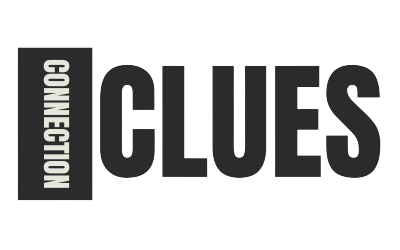In decision-making, project planning, and business strategy, the terms “viable” and “feasible” are often used interchangeably—but they don’t mean the same thing.
Understanding the difference between viable vs feasible is essential for making smart choices, whether you’re launching a product, building a business, or evaluating a project proposal.
In this article, we’ll clearly define both terms, compare them with real-world examples, and explain how to use them correctly in professional settings.
What Does “Feasible” Mean?
The word feasible refers to whether something is practically achievable or possible, given the current resources, time, and technology.
Feasibility = Can it be done?
- Is it technically possible?
- Do we have the tools, time, and budget?
- Are there legal or logistical barriers?
Example:
It’s feasible to build a solar-powered vehicle using current technology and funding.
If something is not feasible, it means it cannot realistically be done at this time.
What Does “Viable” Mean?
Viable refers to whether an idea or plan is capable of succeeding or sustaining itself in the long term. It’s more about end goals and impact than short-term execution.
Viability = Will it work long-term?
- Is there demand or market need?
- Will it be profitable or sustainable?
- Will it survive in the competitive environment?
Example:
While it’s feasible to open a bookstore in a small town, it may not be viable due to declining demand for physical books.
In short: Something may be feasible but not viable—and vice versa.
Viable vs Feasible: Key Differences
| Criteria | Feasible | Viable |
| Focus | Practical possibility | Long-term success or sustainability |
| Scope | Short-term, immediate | Long-term, strategic |
| Evaluation | Tools, time, money, legality | Market, growth, sustainability |
| Example Question | Can we build it now? | Will it last or make a profit? |
| Project Context | Implementation | Business case or market survival |
Why Understanding the Difference Matters
Misunderstanding feasibility and viability can lead to costly project failures or missed business opportunities. Here’s why both are important:
Project Management
- Feasibility checks ensure you’re not wasting time on impossible ideas.
- Viability checks help prevent projects that can be built but won’t deliver ROI.
Startups & Business Plans
- A startup idea might be feasible (easy to build) but not viable (no one wants to buy it).
- Investors want to see both feasibility and viability in pitch decks.
Strategic Planning
- Corporations use feasibility studies and viability assessments before major expansions, product launches, or entering new markets.
Real-World Examples
Launching a Food Truck
- Feasible? Yes, if you have permits, a truck, and startup capital.
- Viable? Only if there’s customer demand, good location, and profit margin.
Creating a New App
- Feasible? You have the team and tech to build it.
- Viable? If users will adopt it and stay engaged.
Building a Bridge in Remote Area
- Feasible? Technically challenging, but possible with funding.
- Viable? May not be viable if usage is too low to justify costs.
Viable vs Feasible vs Desirable
A third concept often comes into play: Desirability. Especially in UX design and innovation.
| Term | Meaning |
| Feasible | Can we build it? (technical) |
| Viable | Will it succeed financially/sustainably? |
| Desirable | Do users or customers want it? |
The sweet spot for any product or service is when all three are balanced.
How to Assess Feasibility and Viability
Feasibility Study Might Include:
- Budget estimates
- Legal checks
- Timeline
- Resource availability
- Technology requirements
Viability Study Might Include:
- Market research
- Customer analysis
- Competitive positioning
- Revenue models
- Risk factors
Together, these help answer:
Should we proceed, pivot, or cancel?
Common Use Cases in Business and Academia
In Business:
- Feasibility: “Can we launch in 90 days?”
- Viability: “Will this business break even in 12 months?”
In Academia:
- Feasibility: Research scope, tools, data collection
- Viability: Relevance, impact, and long-term contribution to the field
Common Mistakes to Avoid
- Using them interchangeably: They’re not synonyms.
- Skipping one of the evaluations: You need both.
- Assuming feasibility = guaranteed success: Many feasible projects fail due to poor viability.
- Overlooking hidden costs: A project may seem viable on paper but not be truly sustainable.
Conclusion
Understanding the difference between feasible and viable is essential for effective decision-making. While feasibility is about possibility, viability is about sustainability and long-term success.
Both must be evaluated together to determine whether an idea, project, or business plan is worth pursuing.
Just because you can do something doesn’t mean you should—and just because something sounds profitable doesn’t mean it’s practically possible.
FAQs
1. Can a project be feasible but not viable?
Yes. For example, you can technically build a product, but if no one wants it or it won’t generate profit, it’s not viable.
2. Are feasibility studies and viability studies the same?
No. A feasibility study checks if something can be done. A viability study checks if it should be done based on long-term benefits.
3. Which should I assess first—feasibility or viability?
Start with feasibility. If the project isn’t possible, there’s no point evaluating its viability.
4. What industries rely most on viability assessments?
Startups, tech development, real estate, product development, and investment firms all use viability analysis regularly.
5. Can an idea be viable today but not feasible until later?
Absolutely. Technology or funding may not exist yet—but when it does, the idea becomes both feasible and viable.
Also read: Inbox Management Professional: The Ultimate Guide to Mastering Email Overload in 2025









